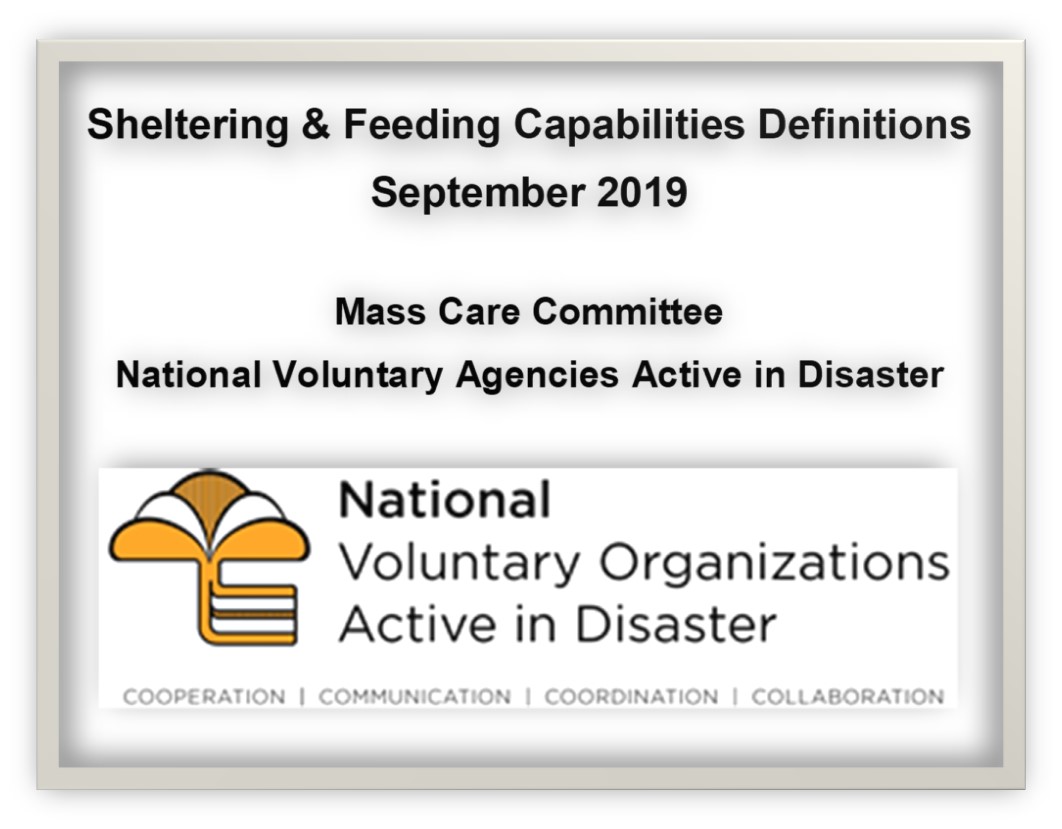THE NATIONAL MASS CARE STRATEGY INCLUDES FIVE GUIDING PRINCIPLES, WHICH WILL BE IMPLEMENTED THROUGH A STATE AND LOCAL GOVERNMENT–FOCUSED ENGAGEMENT. THE RECOMMENDED COURSES OF ACTION ARE BASED ON THESE PRINCIPLES. THEY ARE:
Whole Community Approach
Engagement of the whole community in building mass care capacity is vital to increasing national response capability. Day-to-day community and state preparedness activities are a critical component of successful mass care response. Disaster preparedness is also a responsibility of individuals, families, and communities. To reach
the level of preparedness required to meet our disaster risks, the Whole Community must identify pre- and post-disaster actions to build capacity, promote resiliency, and facilitate disaster recovery preparedness; mass care response capacity-building at both the national and community levels is necessary to prepare our nation to address the needs of a catastrophic event.
Integrated Response
Engagement of the whole community in building mass care capacity is vital to increasing national response capability. Day-to-day community and state preparedness activities are a critical component of successful mass care response. Disaster preparedness is also a responsibility of individuals, families, and communities. To reach the level of preparedness required to meet our disaster risks, the Whole Community must identify pre- and post-disaster actions to build capacity, promote resiliency, and facilitate disaster recovery preparedness; mass care response capacity-building at both the national and community levels is necessary to prepare our nation to address the needs of a catastrophic event.
Holistic Approach to Survivor Support
We need to ensure that mass care services are available to all impacted communities and provided in a confidential and nondiscriminatory manner that ensures the safety, security, and well-being of all, including individuals with disabilities and other access and functional needs, children, and older adults. As part of the holistic approach to survivor support, mass care plans should also address the needs of individuals with household pets and service animals. The ultimate goal of mass care services is to provide survivors with the comprehensive life-sustaining support they require to move from response to recovery.
Sustainable Mass Care Capacity
Mass care capacity-building has typically been undertaken to meet specific shortfalls that occur in a disaster response rather than as part of an integrated, nationwide building and sustainment program. This creates temporary increases in capability but does not reflect the true cost of maintaining response capacity over time. Additionally,
mass care preparedness and planning activities should be based on a firm foundation of common definitions and methodologies of estimating mass care service delivery requirements. Resource requirements should be matched against an accepted methodology of estimating known resource availability to determine shortfalls and allow effective contingency planning. The community of mass care practitioners should focus on solutions that are feasible, achievable, and sustainable—matched to resources that provide stability over the long-term.
Scalable, Flexible National Mass Care Resource Capabilities
As incidents change in size, scope, and complexity, response efforts must adapt to meet evolving requirements. The number, type, and sources of mass care resources must expand rapidly to meet the changing needs associated with a given incident. Current mass care resources are generally adequate to handle the majority of disasters, but we must strengthen our capabilities to respond to rapid sequences of multiple large disasters or to a truly devastating catastrophic disaster, which could require mass care services to be provided to over 1.75 million people in multiple states. As the needs of disaster survivors change, mass care service providers need to remain flexible. As the incident is stabilized, efforts should be adaptable to support the ongoing needs of the survivors during the transition from response to recovery.



